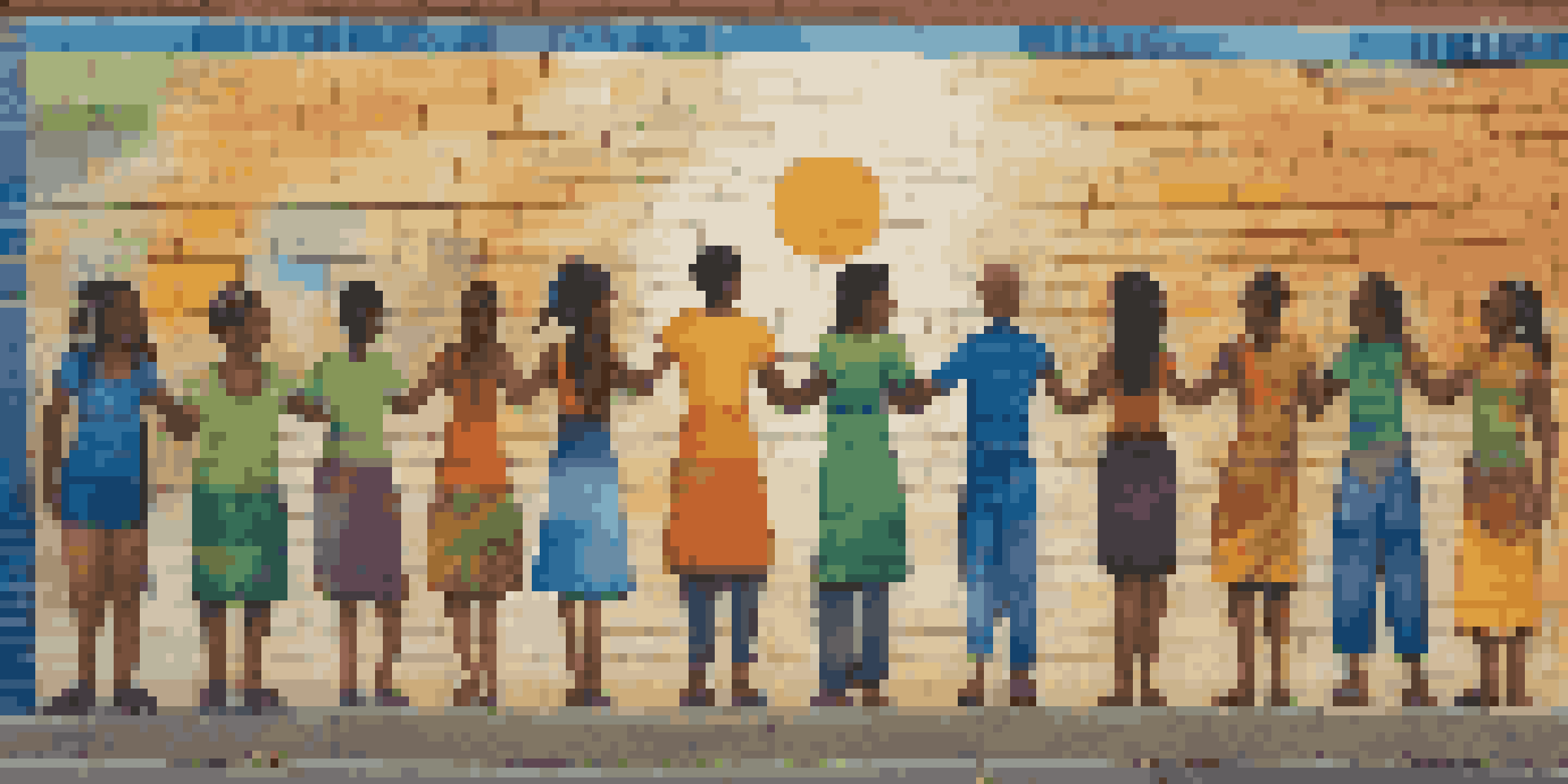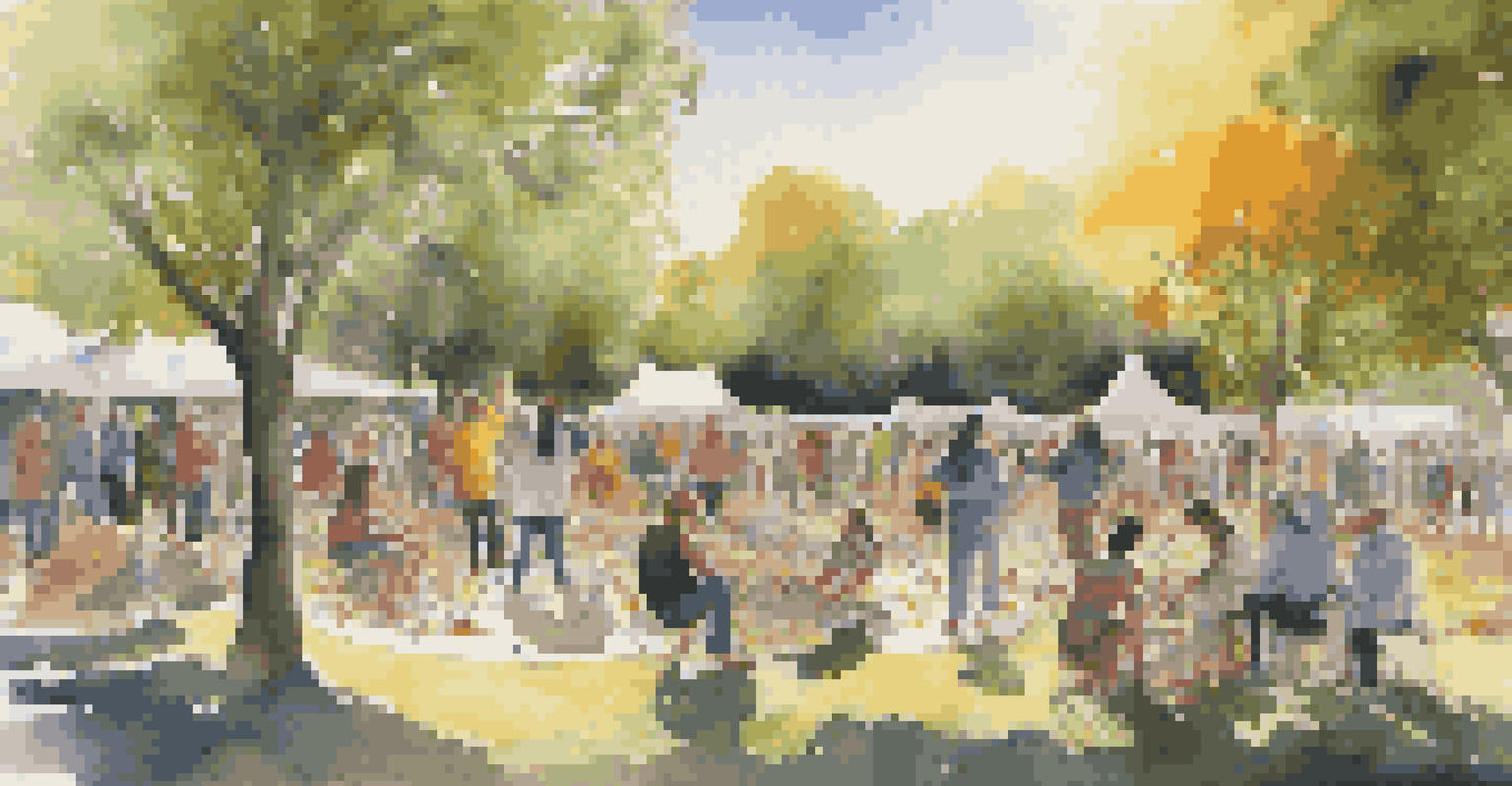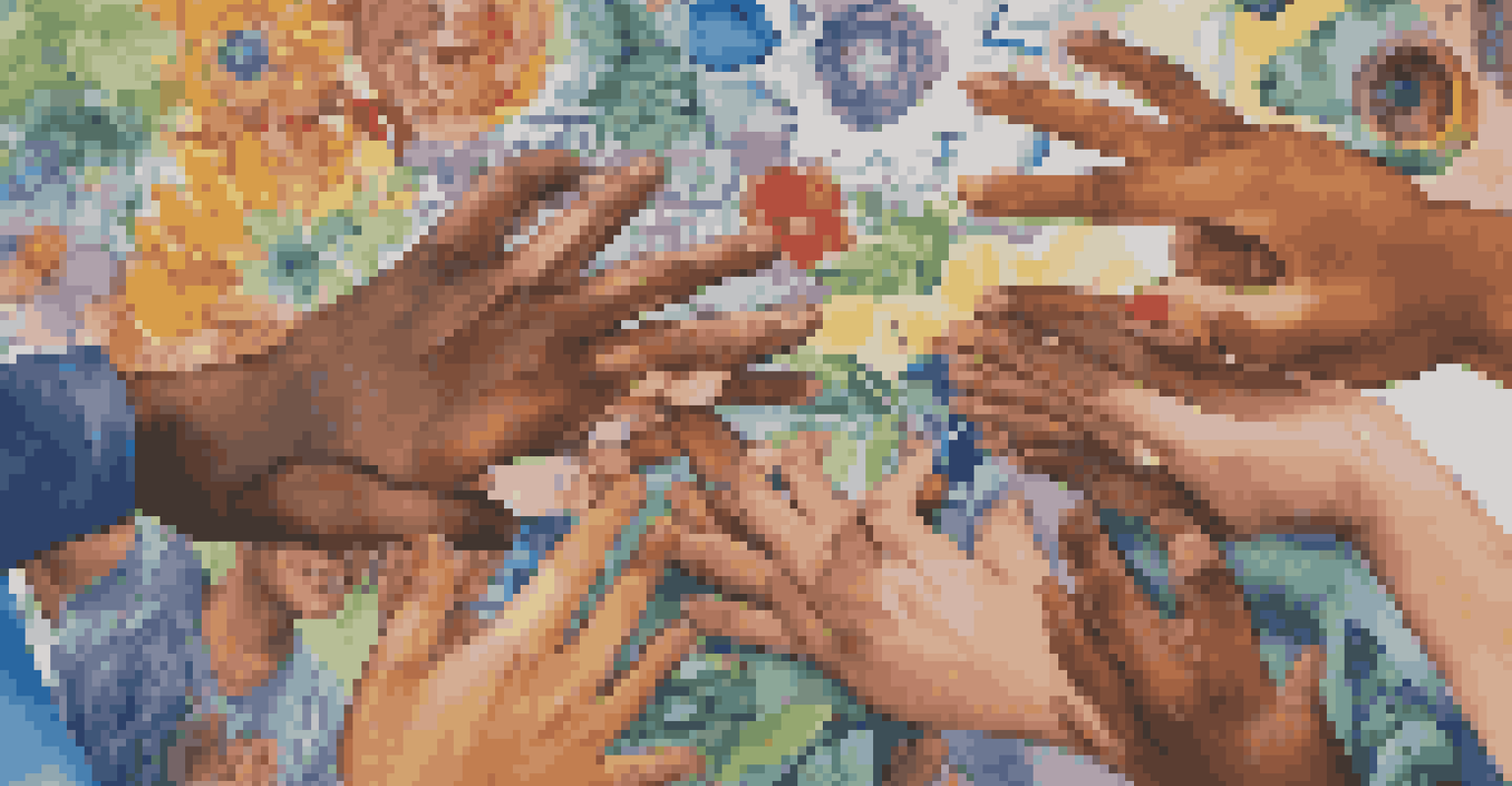Art and Activism: Ethical Dimensions in Protest Art

Understanding Art as a Form of Protest
Art has long served as a powerful vehicle for protest, allowing individuals and communities to express dissent and challenge the status quo. From murals that depict social struggles to performance art that addresses political issues, these creative expressions resonate deeply with audiences. They not only capture the spirit of a moment but also inspire action and reflection on societal injustices. Through art, complex ideas can be conveyed in ways that are accessible and engaging.
Every act of rebellion expresses a nostalgia for innocence and an appeal to the essence of being.
Consider the iconic works of artists like Banksy, whose street art often critiques capitalism and war. His pieces provoke thought while encouraging viewers to engage with pressing social issues. This blend of artistry and activism demonstrates how art can transcend traditional boundaries and reach broader audiences. Indeed, protest art can mobilize communities, drawing attention to causes that might otherwise be overlooked.
However, the effectiveness of protest art depends on its ethical grounding. Artists must consider the potential impact of their work, ensuring it doesn't inadvertently harm the very communities they aim to support. Balancing creativity with responsibility is essential in crafting messages that resonate without offending or misrepresenting marginalized voices.
The Role of Ethics in Artistic Expression
Ethics in art refers to the moral principles that guide an artist's decisions and the messages they convey. In the realm of activism, these ethical considerations become even more pronounced, as artists navigate sensitive subjects that affect real lives. Artists must ask themselves: Who is my audience? What message am I sending? And, importantly, am I amplifying the voices of those who are often unheard?

For example, consider the use of imagery in protest art. While powerful visuals can evoke strong emotional responses, they can also perpetuate stereotypes or misinterpret experiences. Artists should strive for authenticity and accuracy, ensuring their work reflects the true nature of the issues at hand. This commitment to ethical representation fosters trust and solidarity with the communities they portray.
Art as a Protest Tool
Art serves as a powerful means for communities to express dissent and inspire action against societal injustices.
Moreover, ethical considerations extend to the methods of creating and distributing art. Collaborating with the communities represented can lead to more genuine narratives and help to avoid cultural appropriation. In this way, artists can create work that not only resonates but also respects the integrity of those whose stories they aim to tell.
Cultural Sensitivity in Protest Art
Cultural sensitivity is crucial for artists engaged in activism, especially when addressing issues that impact diverse communities. Understanding the historical and social contexts of these communities can significantly enhance the message behind the art. Artists must be aware of their own positionality and how it influences their perspective on the issues they depict.
Art should comfort the disturbed and disturb the comfortable.
For instance, an artist from a privileged background might unintentionally misrepresent the struggles of marginalized groups. This misrepresentation can lead to backlash and undermine the very cause they wish to support. By prioritizing cultural sensitivity, artists can ensure their work resonates authentically and fosters dialogue rather than division.
Listening to the voices of those directly affected by the issues being addressed is essential. Engaging with community members not only enriches the content of the artwork but also builds trust and collaboration. This approach can transform protest art into a shared narrative that empowers rather than alienates.
The Impact of Digital Platforms on Protest Art
In our digital age, social media has revolutionized the way protest art is created and shared. Platforms like Instagram and Twitter allow artists to reach global audiences instantly, breaking down geographical barriers. This accessibility can amplify messages of social justice and unite individuals around shared causes, showcasing the power of art in activism.
However, the rapid dissemination of art online also raises ethical questions. The potential for misinterpretation or misuse of an artist's work can occur when images are taken out of context. Moreover, the phenomenon of virality can lead to the commodification of protest art, where the message becomes secondary to the aesthetic appeal.
Ethics and Cultural Sensitivity
Artists must prioritize ethical considerations and cultural sensitivity to ensure their work authentically represents marginalized voices.
Therefore, artists must navigate these digital landscapes thoughtfully, maintaining their integrity while adapting to the evolving nature of activism. Engaging with audiences online can also foster community and dialogue, further enriching the impact of their work. In this way, digital platforms can serve as both a tool for activism and a challenge to ethical practice.
Historical Context of Protest Art
To truly understand the ethical dimensions of protest art, it's essential to examine its historical context. Protest art has emerged in various forms throughout history, from the political posters of the 1960s to the graffiti seen during modern uprisings. Each era reflects the specific struggles of its time, creating a rich tapestry of artistic expression intertwined with activism.
For example, the Harlem Renaissance showcased African American artists who used their work to challenge racial discrimination and celebrate their cultural heritage. This movement not only provided a platform for marginalized voices but also set a precedent for future generations of artists. Understanding these historical roots can inspire contemporary artists to approach their work with a sense of responsibility and respect.
Additionally, the lessons learned from past movements can guide current artists in their ethical considerations. By reflecting on the successes and failures of historical protest art, modern creators can refine their approaches, ensuring their work contributes positively to ongoing struggles for justice and equality.
Collaborative Approaches in Protest Art
Collaboration is a powerful tool in protest art, allowing artists to engage with communities and co-create meaningful messages. By working alongside those directly affected by social issues, artists can ensure their work resonates authentically and reflects diverse perspectives. This collaborative spirit fosters a sense of ownership and empowerment among community members.
For instance, community murals often emerge from collective efforts, where local voices shape the narrative and design. This not only enriches the artwork but also strengthens community bonds. When people see their stories represented in art, it can ignite a sense of pride and motivate them to take action.
Digital Platforms Shape Activism
Social media has transformed protest art by allowing instant global sharing, but it also raises ethical concerns about context and representation.
Moreover, collaborative approaches can help mitigate ethical concerns regarding representation. By prioritizing inclusivity and dialogue, artists can navigate the complex landscape of protest art more effectively. Ultimately, these partnerships create a more impactful and ethical artistic practice that honors the voices of those it aims to uplift.
The Future of Art and Activism
As we look to the future, the intersection of art and activism will continue to evolve, shaped by technological advancements and shifting social landscapes. Emerging mediums, such as virtual reality and interactive installations, offer new ways for artists to engage audiences and provoke thought. These innovations can deepen the emotional resonance of protest art, inviting viewers into immersive experiences that challenge their perceptions.
However, with these new opportunities come fresh ethical dilemmas. Artists must remain vigilant in considering how their work impacts audiences and the communities they represent. Striking a balance between creativity and ethical responsibility will be essential in navigating this evolving terrain.

Ultimately, the future of art and activism hinges on collaboration, dialogue, and a commitment to authenticity. As artists continue to push boundaries and challenge injustices, their work will play a vital role in shaping a more equitable society, reminding us that art is not just a reflection of the world but a catalyst for change.